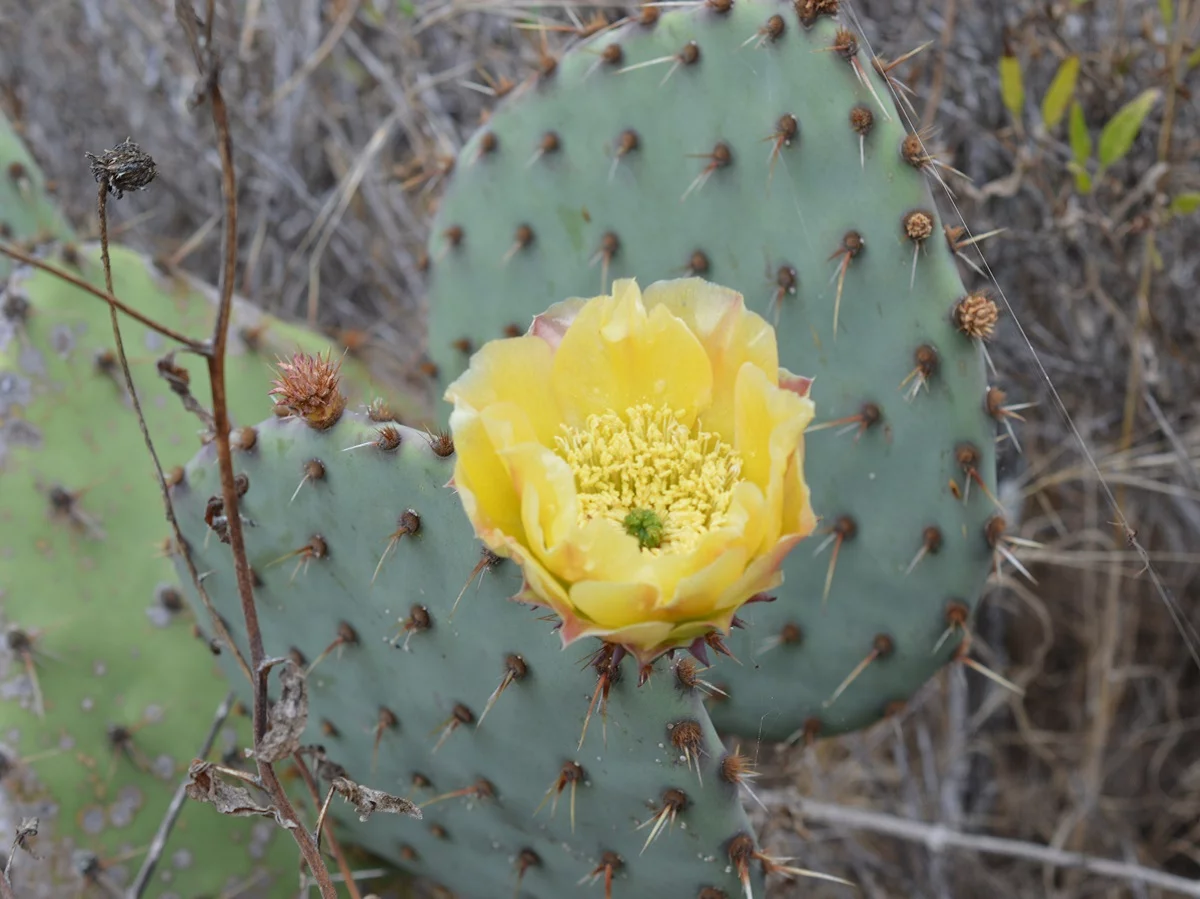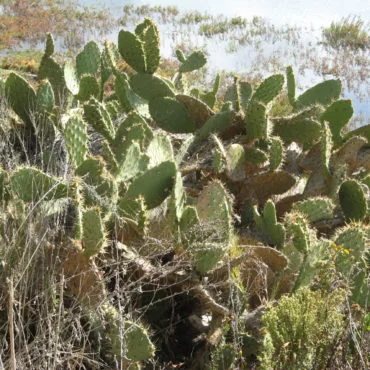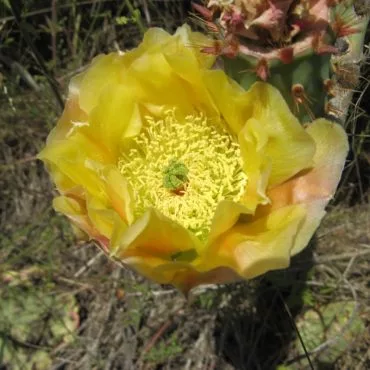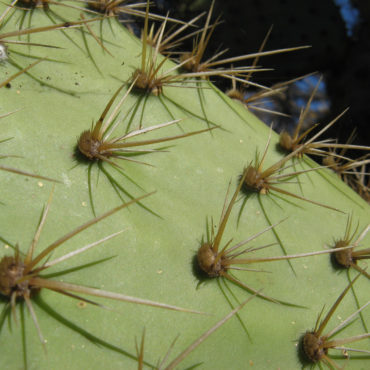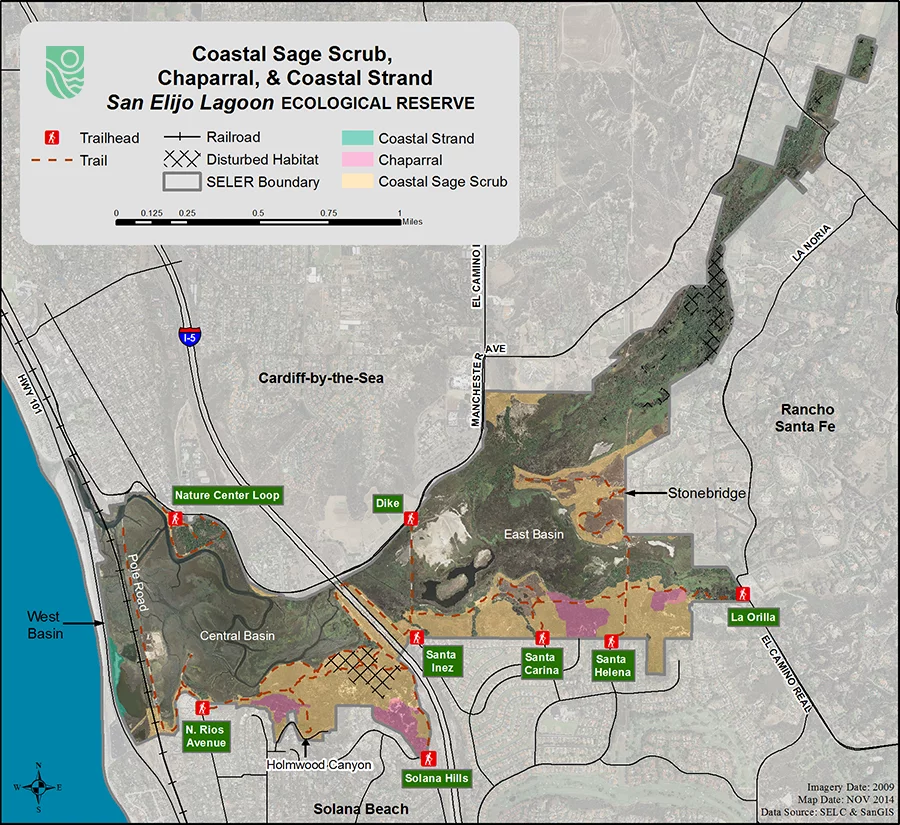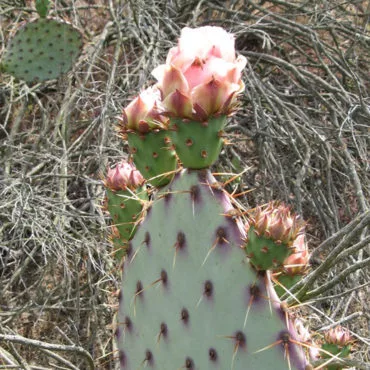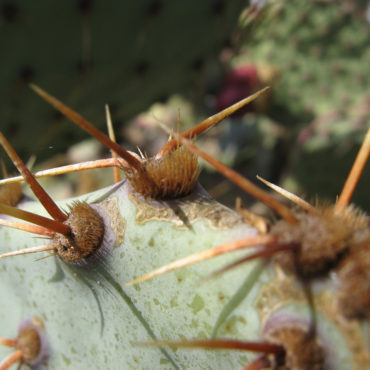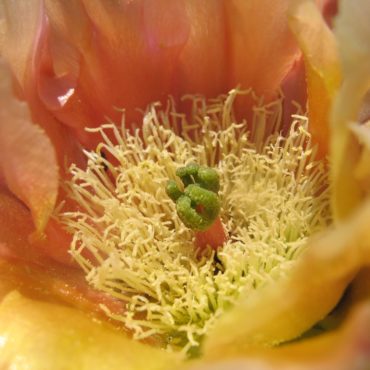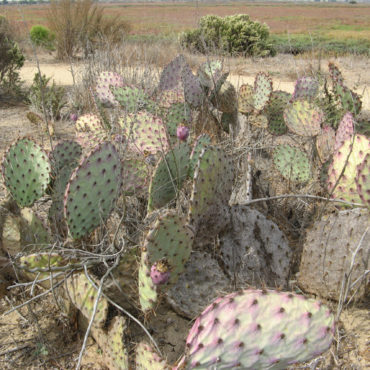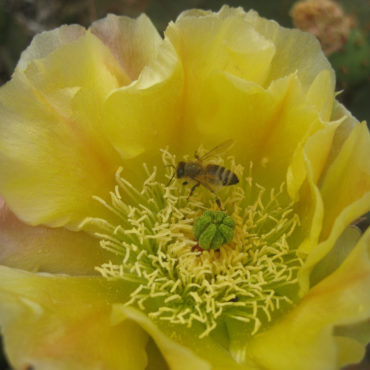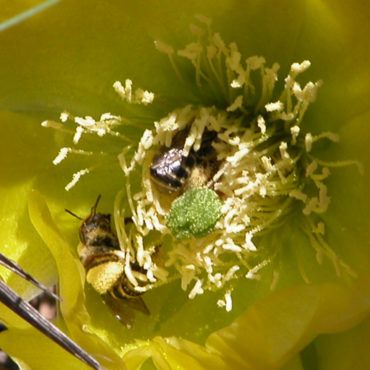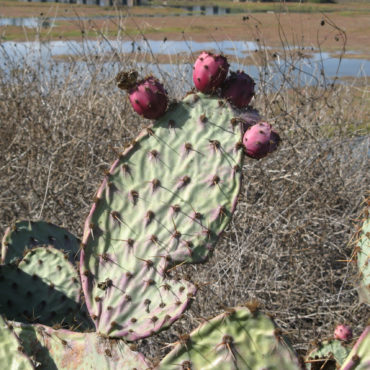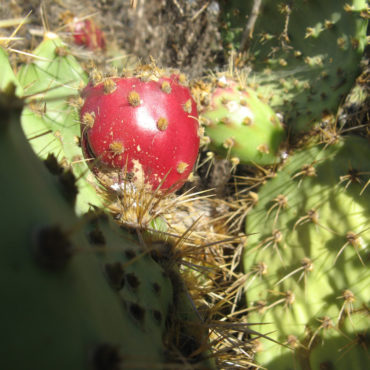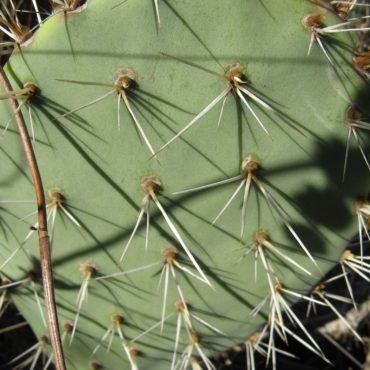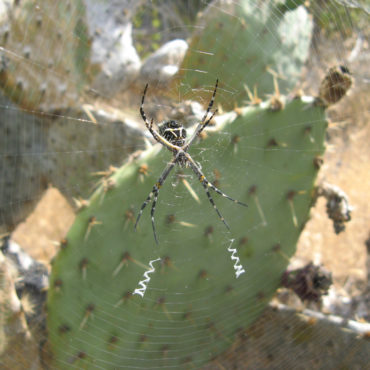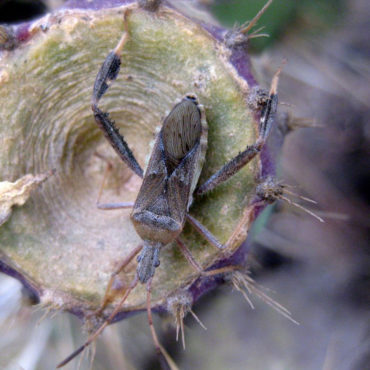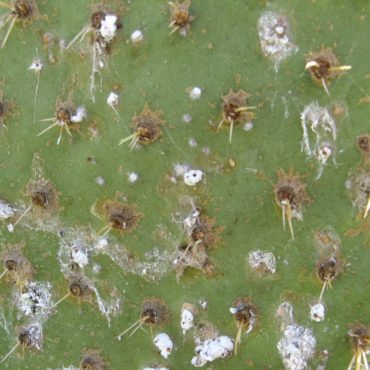Like most cacti, prickly pears are highly adapted for dry climates. Leaves are small and rarely present. Instead, the thick, waxy stems (pads) have developed chlorophyll and assumed the photosynthetic function of leaves. The internal tissues of pads are spongy, providing a large volume for storing water. The root system is shallow and extensively branched, allowing prickly pears to capture even the slightest moisture. The spines, which protect the cactus from small rodents that would chew the pads for moisture, also serve as dew points; the largest spines, which often tend downward, condense fine mist and dew and direct the resultant dew drops to the roots at the base of the plant.
In addition, cactus have evolved “Crassulacean Acid Metabolism” (CAM). Almost all plants take up carbon dioxide and release oxygen during the day when the CO2 can be immediately used for photosynthesis. Most water loss occurs during this exchange of gasses. With CAM, cacti are able to exchange gasses at night, temporarily storing CO2 in an acid form. Since gas exchange occurs when the temperature is lower and humidity higher, the inevitable loss of water is reduced. It is estimated that cactus lose 1/6000 th as much water as an average plant. This type of metabolism was first identified in the family Crassulaceae, which includes succulent plants such as jade plants and sedums. It is found in a wide variety of other plants, such as agaves, orchids and pineapples.41
Cactus flowers are designed to ensure cross-pollination. The top of the female reproductive structure, the stigma, extends above the male stamens, providing a landing place for pollinators that deposit pollen from recently-visited plants. To collect nectar and additional pollen from the target flower, the insect burrows through the pollen-loaded stamens to the nectar chamber. The stamens are thigmotactic, reacting to touch by closing inward around the insect, thoroughly dusting it with pollen. Some of this pollen will be deposited on the next flower visited.

